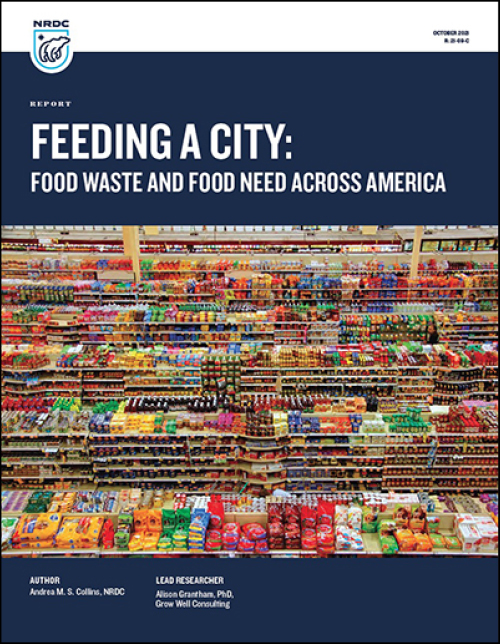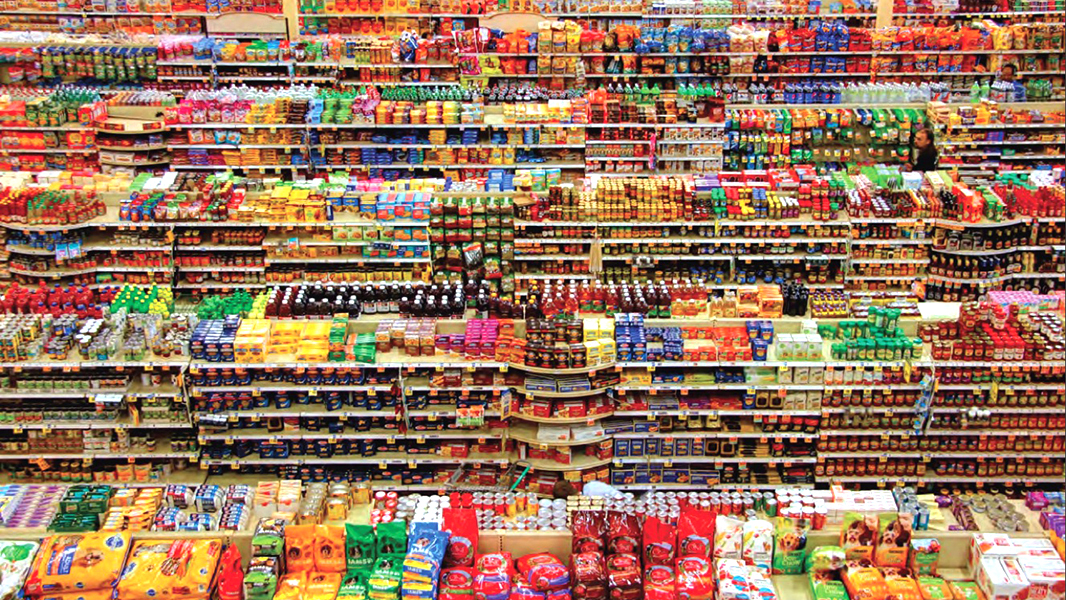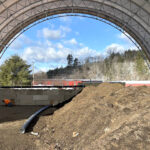Top: Graphic courtesy of NRDC
A core theme of NRDC’s (Natural Resources Defense Council) Food Matters program is replicability of successful models to reduce municipal food waste. Among the tools it has created for its partner cities where pilots are being conducted is a calculator to estimate a local baseline level of food waste generated and the amount of food that could potentially be rescued for redistribution to people in need of food aid. Estimating the amount of food waste in a city is a foundational component of any city’s initiative to understand the scale and nature of the problem and to inform future policy and program development to address food waste.
“As these tools are used more widely, we can discern patterns across cities,” explains Andrea Collins, Sustainable Food Systems Specialist at NRDC. “Though each location’s specific food business composition is unique, there are commonalities across nearly all cities we have worked with; these generalizations may be useful to other cities seeking to make quick progress on food waste reduction in order to meet their climate sustainability goals, lower their waste management costs, or address the emergency food needs of their community.”
 NRDC analyzed the results of running the calculator tool for 22 U.S. cities, and compiled the patterns it found and recommendations for cities into a new report: Feeding a City: Food Waste and Food Need Across America. “With some minor exceptions, we found the breakdown of food waste generation by sector to be consistent across most cities,” says Collins, author of the report. “In this study, we also analyzed ways in which each city’s demographics (e.g., size, population density, poverty rate, etc.) led to its resulting food waste generation and food rescue potential profile. For example, we found food waste is negatively correlated with population density — as density increases, waste decreases — at both the city and the household level, which may have implications for urban planning and development.”
NRDC analyzed the results of running the calculator tool for 22 U.S. cities, and compiled the patterns it found and recommendations for cities into a new report: Feeding a City: Food Waste and Food Need Across America. “With some minor exceptions, we found the breakdown of food waste generation by sector to be consistent across most cities,” says Collins, author of the report. “In this study, we also analyzed ways in which each city’s demographics (e.g., size, population density, poverty rate, etc.) led to its resulting food waste generation and food rescue potential profile. For example, we found food waste is negatively correlated with population density — as density increases, waste decreases — at both the city and the household level, which may have implications for urban planning and development.”
The analysis found that the breakdown of food waste generation by sector is fairly consistent across most cities. On average, the residential sector generates the largest proportion, typically more than one-third; restaurants tend to be the second largest generator. Food manufacturing and processing is the most variable sector, depending on the number of manufacturers located in a city or town. Consistently, notes the Executive Summary of Feeding A City, “three sectors are the smallest [food waste generators] across all cities investigated: correctional facilities, K-12 schools, and health care facilities.”
Retail sectors (grocery stores, small corner markets, and convenience stores) have the largest potential for rescuing surplus food to be redistributed to community members in need. However, Collins found that very few cities have enough rescuable surplus food within their borders to cover their meal gap (i.e., to fill the needs of all food-insecure households). “On average, the maximum amount of food potential available for food rescue would cover 72% of a city’s meal gap,” she says.
Key recommendations to cities resulting from this analysis include:
- Focus on preventing residential food waste to meet waste reduction goals.
- Engage restaurants in food waste reduction strategies, as they collectively are the biggest commercial generators of food waste in nearly every city.
- Identify generator hot spots where a small number of facilities are producing sizable amounts of food waste and provide targeted technical assistance in food waste prevention, rescue of surplus food, and recycling of food scraps. These specific hot spots will vary by city, but NRDC’s investigation suggests that cities may want to start with the food manufacturing and processing sector and/or an obvious large generator, like a sizable university.
- Maximize surplus food rescue from retail, which includes supermarkets and, for some cities, small corner stores.
- Work with surplus food rescue organizations to determine how much food is already being rescued and identify opportunities for improvement.













